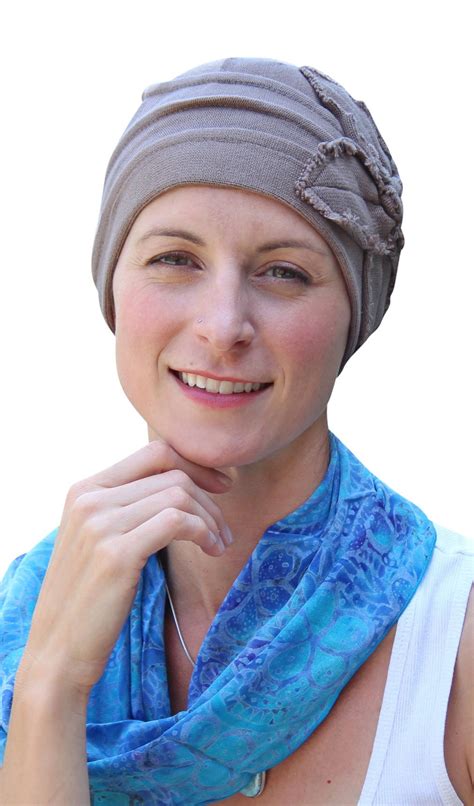Chemotherapy, a powerful treatment for various types of cancer, can lead to hair loss, a common and distressing side effect. For many patients, head coverings offer comfort, confidence, and a sense of normalcy. This article delves into the world of head coverings for chemotherapy patients, providing a comprehensive guide to types, materials, styles, and tips for choosing and using them.

Navigating the Sea of Options
The variety of head coverings available for chemotherapy patients is vast, catering to different tastes, needs, and lifestyles. Here’s an overview of the main categories:
Wigs
Wigs, made from synthetic or human hair, offer a natural and undetectable hair replacement solution. They come in various lengths, colors, and textures, allowing patients to match their natural hair or experiment with different styles.
Scarves
Scarves, often made from silk, cotton, or bamboo, are versatile and comfortable head coverings. They can be tied, wrapped, or draped in countless ways, providing both coverage and a stylish accessory.
Hats
Hats, including beanies, berets, and baseball caps, offer warmth, protection, and a casual, sporty look. They are ideal for everyday wear and can be accessorized with scarves or other embellishments.
Turbans
Turbans, with their rich cultural heritage, add a touch of elegance and sophistication to any outfit. They are typically made from fabrics like cotton jersey or satin and come in a wide range of colors and patterns.
Headbands
Headbands, made from elastic or fabric, provide a simple and comfortable way to cover the head or hold scarves and wigs in place. They come in various widths and designs, adding a subtle touch of style.
Choosing the Right Head Covering
With so many options available, choosing the right head covering can be overwhelming. Here are some factors to consider:
- Scalp Sensitivity: Chemotherapy can cause the scalp to become dry and tender. Choose fabrics that are soft, breathable, and non-irritating.
- Coverage Level: Consider how much coverage you need or prefer. Some head coverings fully conceal the head, while others offer partial coverage.
- Style and Comfort: Opt for a head covering that you find stylish and comfortable to wear for extended periods.
- Maintenance: Choose a head covering that is easy to care for, whether it requires washing, styling, or special storage.
Tips and Tricks for Using Head Coverings
- Start with a Wig: If you’re new to head coverings, a wig can provide a natural and easy-to-use option.
- Experiment with Scarves: Scarves offer endless styling possibilities. Try different tying techniques and accessorize with brooches or clips.
- Layer Hats and Scarves: Combine hats and scarves for added warmth, coverage, and style.
- Embrace Color and Patterns: Don’t be afraid to experiment with vibrant colors and bold patterns to add some cheer to your appearance.
- Consider Non-Slip Bands: Use non-slip bands to keep wigs or scarves securely in place.
Common Mistakes to Avoid
- Ignoring Comfort: Don’t sacrifice comfort for style. Choose a head covering that feels good on your scalp.
- Not Protecting the Scalp: Wear a beanie or other soft cap under wigs or scarves to protect your scalp from friction.
- Choosing Synthetic Fabrics: Stick to natural fabrics like cotton or silk, which are gentler on the skin than synthetic materials.
- Wearing Heavier Options in Warm Weather: Opt for lightweight, breathable fabrics like linen or bamboo in hot weather to avoid overheating.
FAQs
Q: How do I care for a wig?
A: Wash your wig with gentle shampoo and conditioner, avoid heat styling, and store it on a wig stand or in a cool, dry place.
Q: Can I swim or exercise with a head covering?
A: Some head coverings, such as moisture-wicking hats or scarves, can be worn during exercise or swimming. Check the manufacturer’s instructions for specific guidelines.
Q: How often should I change my head covering?
A: Change your head covering as often as needed to maintain hygiene and comfort, considering factors like sweating or dirt accumulation.
Q: Where can I find support and resources for head covering options?
A: Cancer support organizations, hospitals, and online forums provide information, support groups, and access to resources for head covering options.
Q: Can I use my own hair to make a wig?
A: Yes, some organizations specialize in creating custom wigs from a patient’s own hair before chemotherapy begins.
Q: What’s the difference between a cap and a beanie?
A: A cap is usually fitted, designed to hold wigs or scarves in place, while a beanie is a soft, knit hat that provides warmth and coverage.
Conclusion
Head coverings for chemotherapy patients are not merely a fashion accessory but a source of comfort, confidence, and self-expression. By understanding the different types, materials, and styles available, patients can choose the head coverings that best suit their needs and preferences, empowering them to navigate this challenging journey with dignity and style.
